Summer At Bow Cemetery

Next ticket availability Saturday 2nd September
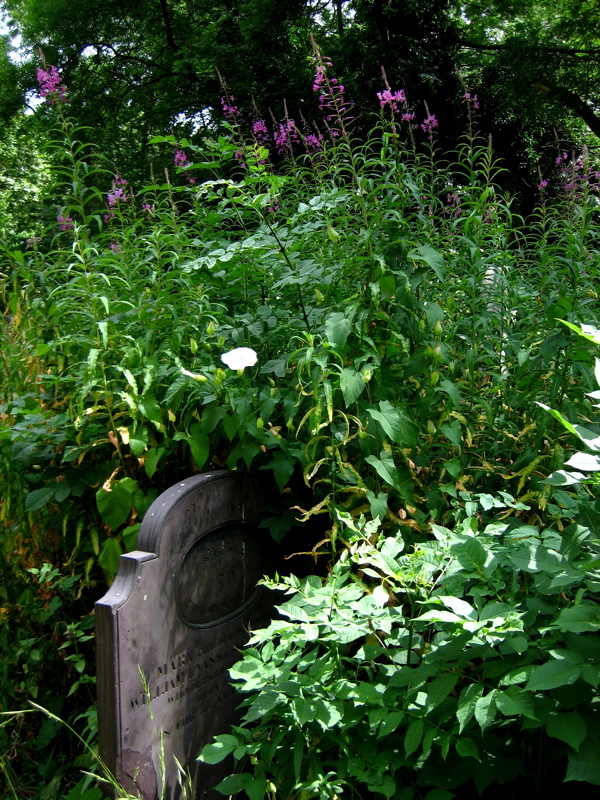
At least once each Summer, I direct my steps eastwards from Spitalfields along the Mile End Rd towards Bow Cemetery, one of the “Magnificent Seven” created by act of Parliament in 1832 as the growing population of London overcrowded the small parish churchyards. Extending to twenty-seven acres and planned on an industrial scale, “The City of London and Tower Hamlets Cemetery” as it was formally called, opened in 1841 and within the first half century alone around a quarter of a million were buried here.
Although it is the tombstones and monuments that present a striking display today, most of the occupants of this cemetery were residents of the East End whose families could not afford a funeral or a plot. They were buried in mass public graves containing as many as forty bodies of random souls interred together for eternity. By the end of the nineteenth century the site was already overgrown, though burials continued until it was closed in 1966.
Where death once held dominion, nature has reclaimed the territory and a magnificent broadleaf forest has grown, bringing luxuriant growth that is alive with wildlife. Now the tombstones and monuments stand among leaf mould in deep woods, garlanded with ivy and surrounded by wildflowers. Tombstones and undergrowth make one of the most lyrical contrasts I can think of – there is a beautiful aesthetic manifest in the grim austerity of the stones ameliorated by vigorous plant life. But more than this, to see the symbols of death physically overwhelmed by extravagant new growth touches the human spirit. It is both humbling and uplifting at the same time. It is the triumph of life. Nature has returned and brought more than sixteen species of butterflies with her.
This is the emotive spectacle that leads me here, turning right at Mile End tube station and hurrying down Southern Grove, increasing my pace with rising expectation, until I walk through the cemetery gates and I am transported into the green world that awaits. At once, I turn right into Sanctuary Wood, stepping off the track to walk into a tall stand of ivy-clad sycamores, upon a carpet of leaves that is shaded by the forest canopy more than twenty metres overhead and illuminated by narrow shafts of sunlight descending. It is sublime. Come here to see the bluebells in Spring or the foxgloves in Summer. Come at any time of the year to find yourself in another landscape. Just like the forest in Richard Jefferies’ novel “After London,” the trees have regrown to remind us what this land was once like, long ago before our predecessors ever came here.
Over time, the tombstones have weathered and worn, and some have turned green, entirely harmonious with their overgrown environment, as if they sprouted and grew like toadstools. The natural stillness of the forest possesses greater resonance between cemetery walls and the deep green shadows of the woodland seem deeper too. There was almost no-one alive to be seen on the morning of my visit, apart from two police officers on horseback passing through, keeping the peace that is as deep as the grave.
Just as time mediates grief and grants us perspective, nature also encompasses the dead, enfolding them all, as it has done here in a green forest. These are the people who made East London, who laid the roads, built the houses and created the foundations of the city we inhabit. The countless thousands who were here before us, walking the streets we know, attending the same schools, even living in some of the same houses we live in today. The majority of those people are here now in Bow Cemetery. As you walk around, names catch your eye, Cornelius aged just two years, or Eliza or Louise or Emma, or Caleb who enjoyed a happy life, all over a hundred years ago. None ever dreamed a forest would grow over their head, where people would come to walk one day to discover their stones in a woodland glade. It is a vision of paradise above, fulfilled within the confines of the cemetery itself.
As I made my progress through the forest of tombstones, I heard a mysterious noise, a click-clack echoing through the trees. Then I came upon a clearing at the very heart of the cemetery and discovered the origin of the sound. It was a solitary juggler practicing his art among the graves, in a patch of sunlight. There is no purpose to juggling than that of delight, the attunement of human reflexes to create a joyful effect. It was a startling image to discover, and seeing it here in the deep woods – where so many fellow Londoners are buried – made my heart leap. In the vast wooded cemetery there was just me, the numberless dead and the juggler.
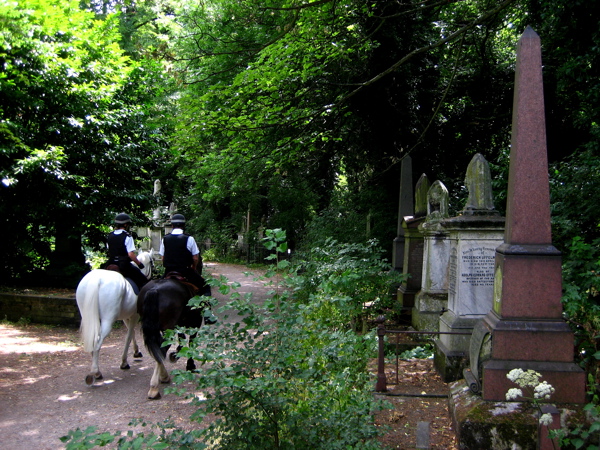

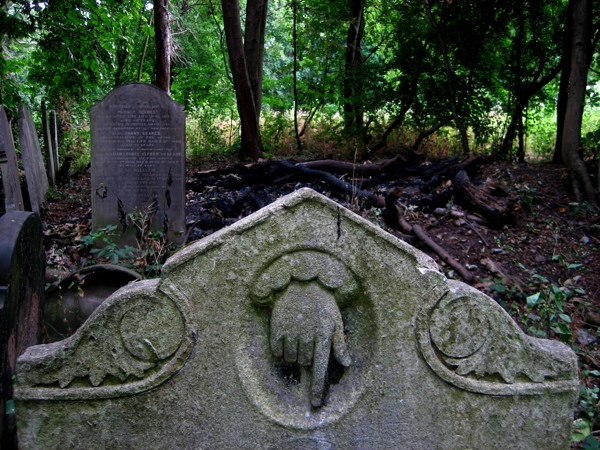
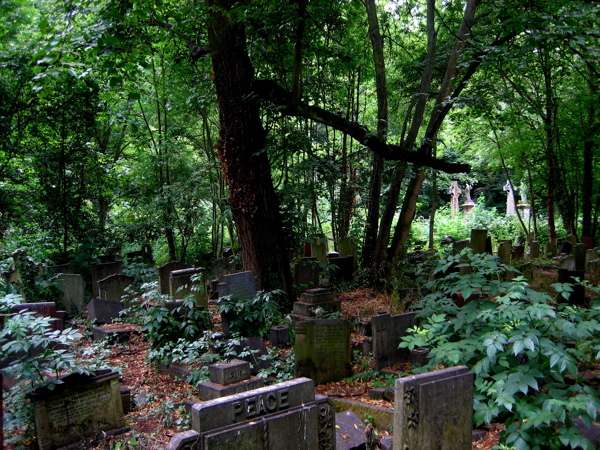

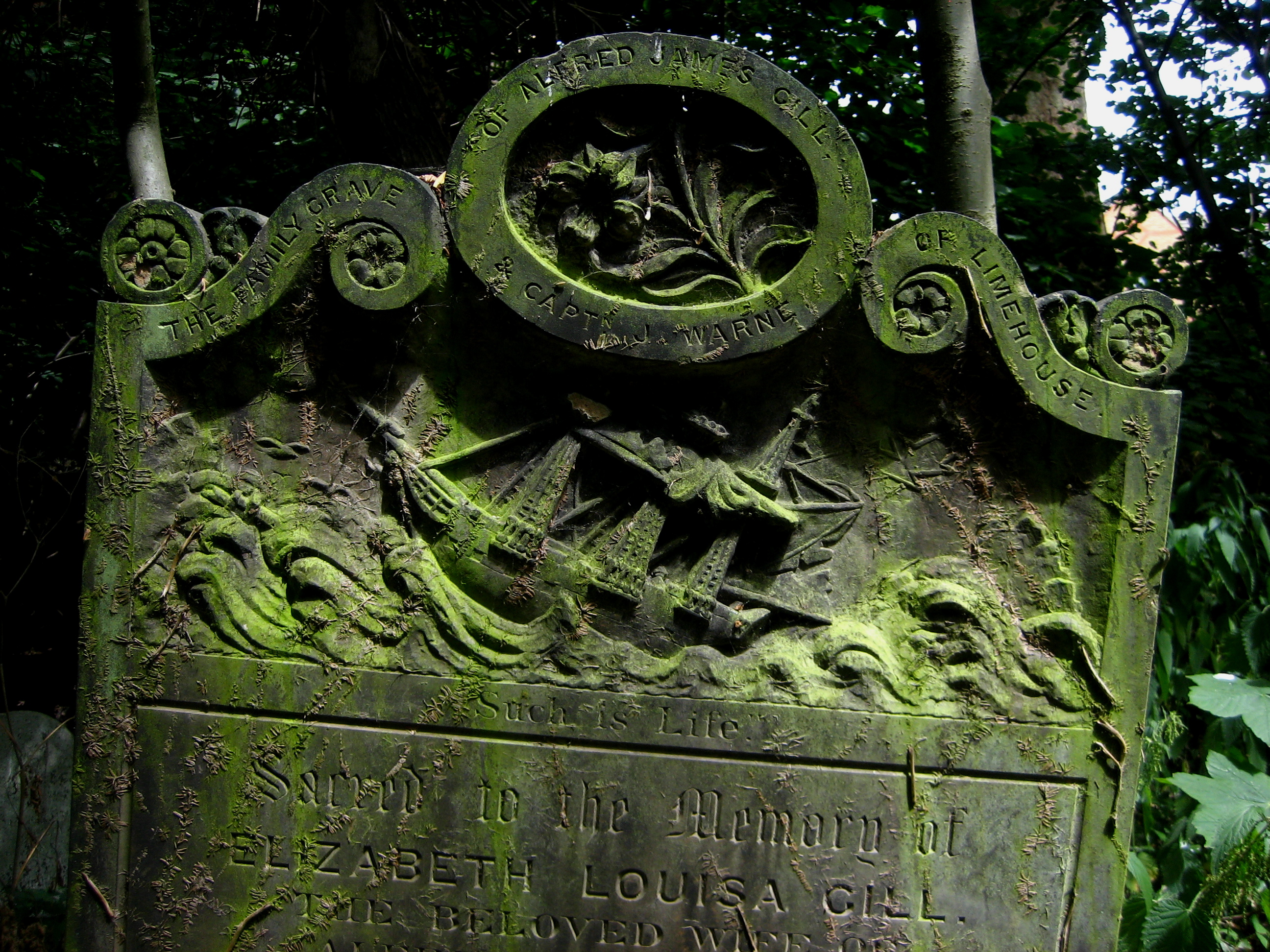

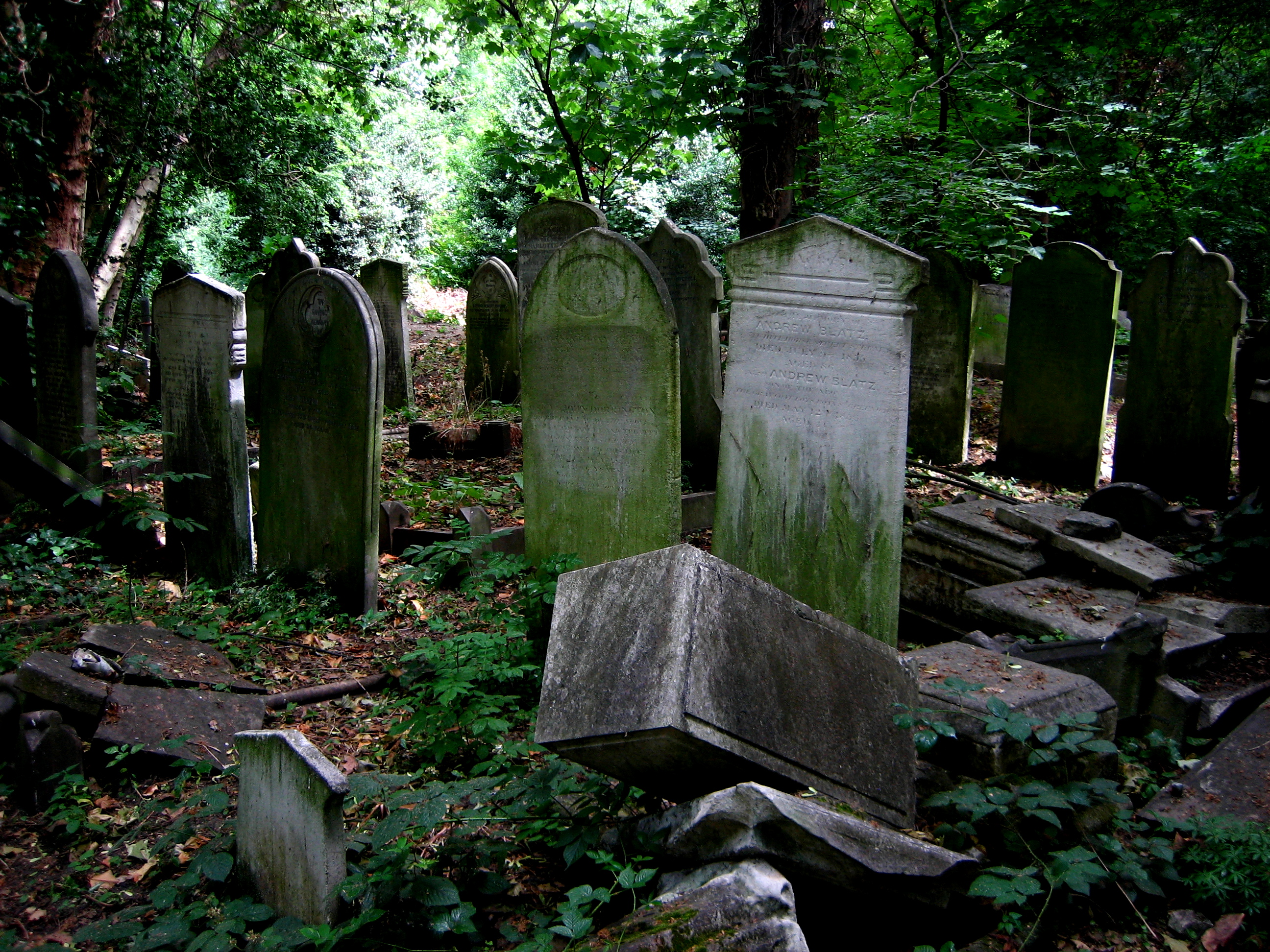
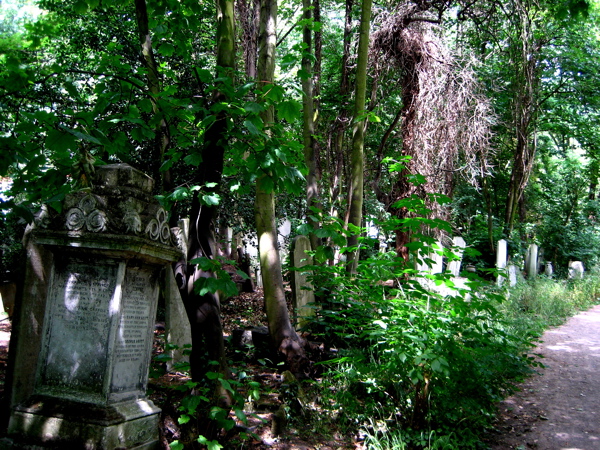
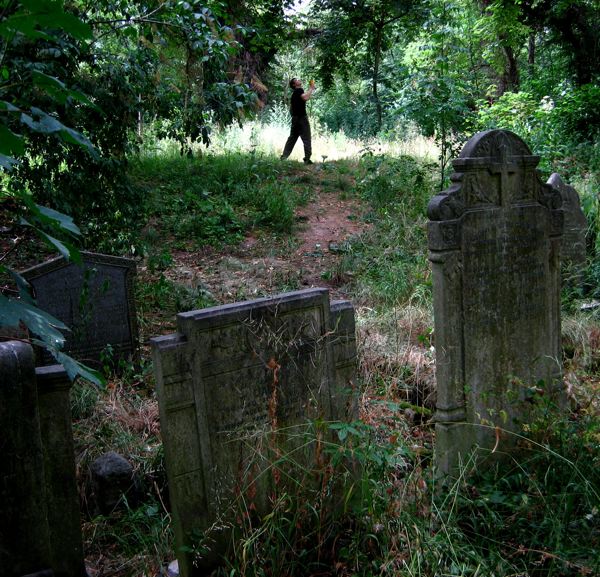
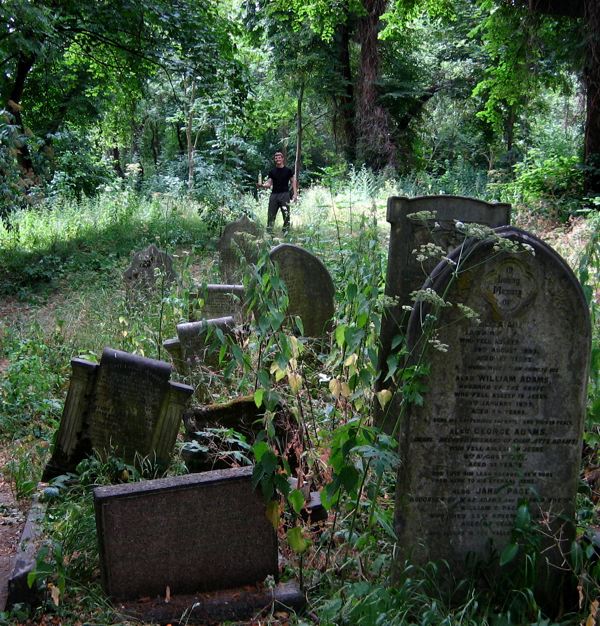
You may also like to read about

















I love the cemetery pictures ~ I walk in two different historic cemeteries here in Atlanta, Ga area and often when I go out of the country and different cities in the USA. I ALSO love many other subjects ( artists, cats, printing and button shops/manufacturers) that you cover
I read every day nearly. If I ever get to your area, I’ll be sure to look you up and see if you’re doing a tour of interest.
Be well, be happy.
Karen ( Printladyk )
A good piece with fitting pictures. I go to a friend’s funeral today. He was 102.
A Doctor,whose wife Joyce, met Mahatma Gandhi twice, while a medical missionary
I became emotional reading today’s piece. It brought to mind my numerous ancestors who rest there, whose graves I have sought out & visited in recent years. My great grandparents were poor & German so lie in the unconsecrated/non-conformist area with no headstones. Such folk are these days commemorated by a modern wooden structure with seating, built by volunteers I understand, as a memorial to replace the original small chapel which has long gone. It is now the only remaining sign of their burial place. I paused there & allowed my mind to drift out toward my family then moved on to stand for a few moments at the graves of my grandfather & his brother, the first generation of my family to be born in England, & who were entitled to be interred in the main cemetery. It is important to thank all the enthusiastic volunteers who maintain this beautiful place, which is exactly as described in the eloquent words of the GA. By the way GA, thank you for acknowledging the contribution of the Eastenders to the building of our great city.
What a wonderful evocative piece. I love cemeteries too – always so peaceful.
Another beautiful post. Thank you Gentle Author.
Thank you for this article Gentle Author – it is such a special place. I also have family buried here and some were fortunate enough to have grave markers. Your readers may like to know about the Friends of Tower Hamlets Cemetery Park who do excellent work here – as their website describes they are “an independent charity that looks after Tower Hamlets Cemetery Park, a unique and vital nature reserve and heritage site in East London” https://fothcp.org/
I’m currently assisting in a project that is indexing cemetery records for Woodgrange Park at Forest Gate for the period beginning 1892. Woodgrange Park is four miles north-east of Bow and is filled with East Enders plus a number from south of the river and the City. Approximately one in seven had a private funeral with a headstone with the majority going into a common grave as you describe. What is more surprising is that about 60% of burials are of infants or still born babies. As many as ten successive entries in the register can be aged ‘zero years’. Virtually no adult made 50 years.
It puts some perspective on how remarkable some of our ancestors fared. My grandfather (born 1884) was the youngest of eleven growing up in Hackney and just one died before maturity.
Its so beautiful. And dust to dust. We return to the earth. So green and nature filled. I love it. I hope always protected. from greedy land developers .. Thank you
I love cemeteries, they are a great insight into social history. Once when wandering through one at Dean Village in Edinburgh I was struck by how many children on the gravestones and family monuments had died in infancy. There is a cemetery in a churchyard near me in Basel where the stones are ornate and imposing, I assume these were perhaps very grand and rich citizens.